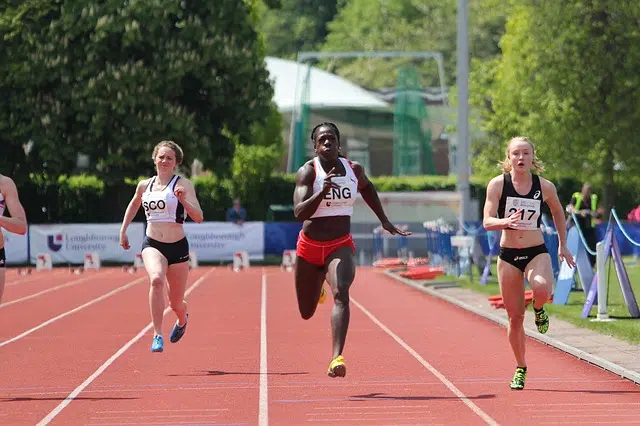
In a sprint race, the athlete who reaches the finish line first wins.
Career is a notion with several uses. In this case we will stick with its meaning as the competition in which the participants try to reach a goal before their opponents. Speed , for its part, can refer to the speed of a movement.
The idea of a speed race , therefore, alludes to a competition that dedicates itself to the one who moves faster than the rest . That is, with greater speed. Whoever reaches the finish line first in a speed race does so before the other competitors.
Different types of sprinting
Under the concept of sprinting, various athletics tests are grouped that lead athletes to try to run as fast as they can. The most famous sprint race is the one that involves covering a distance of 100 meters . In any case, there are speed races of 200 , 400 and even 800 meters .
Generally these speed races take place on specific tracks ( athletics tracks ). The runners all start at the same time when they hear a sound signal, trying to reach the finish line as quickly as possible. The competitor who arrives first wins the race.
The best brands
The athlete who holds the world record in 100-meter sprint races is often considered the fastest man in the world. This qualification has fallen, since 2009 , to the Jamaican Usain Bolt , who managed to run the 100 meters in just 9.58 seconds .
The fastest woman in the world, meanwhile, is Florence Griffith Joyner with a time of 10.49 seconds in the 100 meters .

The moment of departure or start is key in a speed race.
Speed, sprint and endurance race
In this context, we understand speed as the quality that gives us the possibility of traveling a certain distance in the shortest possible time. Starting from this basis and taking into account both the duration and the intensity used in the race effort, two types of speed can be distinguished: pure speed (also called sprint speed ) and speed-endurance.
We can develop pure speed by running short stretches , ranging from 10 to 50 meters, using our potential to the maximum, and in this way the white muscle fibers are activated, precisely those that allow us to achieve the highest performance when running. .
The sprint race should not be confused with an improvised competition in the context of an afternoon outdoors: it is a strictly regulated test and one that only the best prepared people can set out to overcome. The energy expenditure is considerably high, and that is why during the first training sessions a rest is recommended every certain number of meters traveled, with a total goal that does not exceed 400 meters. For every 10 meters, the normal thing is to recover between one and a half and two minutes.
With respect to speed-endurance, this is developed in sections ranging from 60 to 300 meters, making use of approximately 90% of our maximum possibilities. The effort in these cases is considered "submaximal" and the recovery between repetitions must be short, so that we can develop resistance against fatigue.
As lactic acid accumulates in this training for sprint races, the need for oxygen is accentuated, and that is why the red fibers are also activated. A cumulative distance that does not exceed 1200 meters is recommended, with a recovery of 4 minutes every 100 meters traveled.
A competition of great antiquity
Sprint racing is an athletic competition that humans have been developing for a long time. There are historical accounts that documented tests of this type in ancient Greece, where they were carried out to honor the god Zeus in Olympia.
As has happened in many other areas, machismo meant that women had to wait several decades until they could participate in this and other tests to which men already had access.
